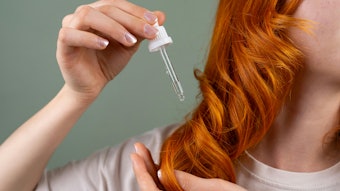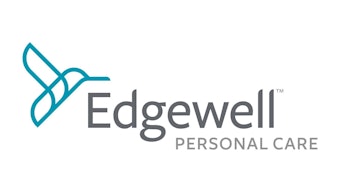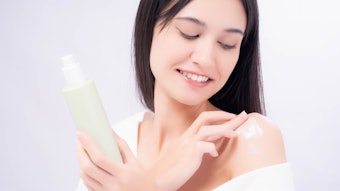Euromonitor believes that increasing consumer reluctance to carry out complicated and time-consuming household cleaning routines has added to the challenge that manufacturers of laundry care and dishwashing products faced in 2004. Conditions for growth already are difficult due to a high penetration of products creating maturity and near saturation in the market, which is exacerbated by intense price competition and private label brands moving in on the market. Therefore, speedier and more user-friendly formulas to suit time-starved consumers are the chief innovations driving the market forward, according to Euromonitor.
This is exemplified by the growing demand for laundry tablets over powders, or specialist fabric softeners losing out to laundry detergents with added fabric softening properties. Developments in formulation have seen the increased presence of natural ingredients known for having cleaning properties, such as orange oil or zest as a movement away from harsh chemical formulations. The emerging scents in household soaps increasingly resemble those seen in cosmetics and toiletry products as the industries converge to align with the consumer trend for natural and organic products in food products.
Laundry detergents constrained by maturity
Laundry care demonstrated slow growth for 2004 at just over 2%, largely due to a decline in sales in the more developed regions of Western Europe and North America where economic uncertainty has led consumers to either opt for purchasing less expensive products in discount stores or using the private label alternative. However, sales were boosted by strong performances in developing regions. Latin America saw the most growth followed by Eastern Europe, Africa, the Middle East and Asia Pacific—where manufacturers are keen to gain presence as incomes rise and consumers turn to higher value products. A move into these developing regions also would help manufacturers to counteract the decline in sales from their domestic territories.
Laundry detergents account for nearly 75% of total laundry care sales, and while there has been some innovation in format terms, this fiercely competitive area provides only limited opportunities for price increases. Although powder detergents have increased sales, convenience is an important driver of growth, particularly in developed economies. Compact powder detergents (i.e. tablets) and, to a lesser extent, dissolvable liquid tablets that are perceived to be less messy and easier to use, have provided some impetus.
Price hampers fabric softeners
Fabric softeners posted growth of 4.3% in 2004, which can be attributed to a sharp increase in sales in Latin America as the region recovers from the devaluation of the peso in late 2002. Asia Pacific, notably Japan, also put in a strong performance, and the surge in sales can be attributed to Japanese consumers returning to fabric softeners, having experimented with 2-in-1 laundry detergents (containing a fabric softener) and finding them unsatisfactory.
The development of economy and mid-market brands has created pressure products with a tradition for premium pricing; high innovation, therefore, is needed to justify the added expense. Two highly innovative products hit the U.S. market in 2004: Downy Simple Pleasures, a line of aromatherapy fabric softeners from Procter & Gamble, and Method with Morning Bloom, a fabric softener with fragrances that include basil and apple blossoms. Although these failed to generate positive growth, they did fend off decline in softeners in the United States. Another area for product development has been additional integrated benefits, such as Haming Frea from Kao Corp, a fabric softener released in August 2004 that, according to the company, prevents clothes from attracting tobacco and sweat smells. In late 2005, Procter & Gamble leveraged its successful Febreze fabric freshener into fabric softeners by introducing Downy with Febreze.
Disposable and natural
Convenience and preference for natural ingredients again have helped to drive innovation in this slow and mature sector. The desire for convenience has resulted in new formats such as impregnated wipes and foaming products, while the preference for natural ingredients has created a market for products with aloe vera, vitamin C and orange peel extract. These demands have led to the emergence of disposable dishcloths, treated with detergent that just require water to activate.
Colgate-Palmolive first launched DishWipes in the United States in mid-2003, and Procter & Gamble followed in February 2004 with the launch of Dawn Wash & Toss. Recent discontinuations of Colgate’s DishWipes product suggest that it is not winning market acceptance.
In mid-2005, Procter & Gamble led innovation with the introduction of Dawn Direct Foam Dishwashing Foam. The instant-foam detergent has a one-touch pump and claims to absorb “10 times more grease than ordinary dish liquids” with a formula that breaks down grease into particles, absorbs it into the foam and rinses it away.
Scent and imagery have been a key focus in product development for a number of years, and the trend progressed significantly in 2004—as exemplified by Ultra Palmolive Aroma Therapy. The extent of the trend was demonstrated further through the launch of Malie Kaua’I Inc.’s dish soap with aromatherapy benefits.
!['Snoopy and Woodstock are cherished [characters] across generations and pairing them with our most-loved body care essentials creates a collection that feels classic with a modern twist. This launch is about celebrating our community with something unforgettable while starting an exciting new era for the brand,' said Luis Garcia, Chief Marketing Officer.](https://img.gcimagazine.com/mindful/allured/workspaces/default/uploads/2025/10/tree-hut-peanuts-fullcollection-fall26-1x1-1253.lGcuurUszp.jpg?auto=format%2Ccompress&fit=crop&h=191&q=70&w=340)









